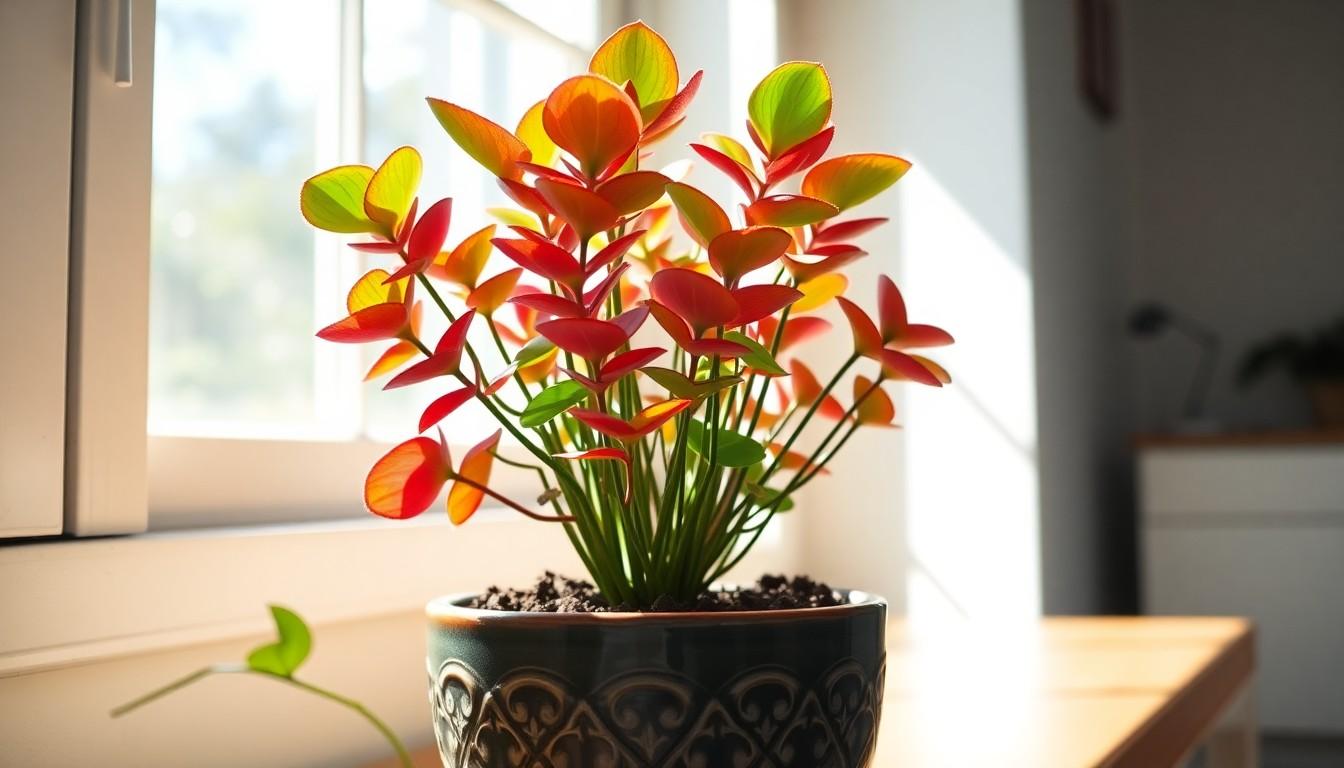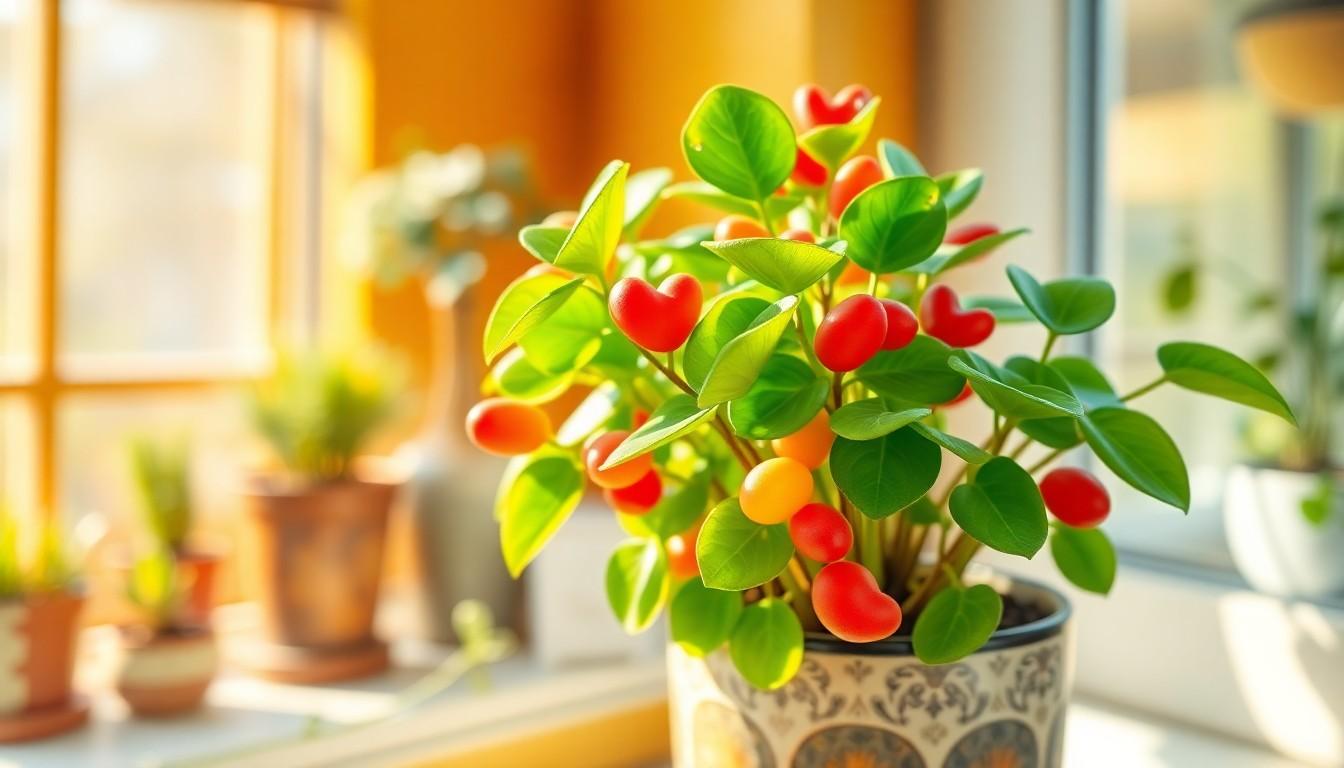If you think jelly beans are just for candy lovers, think again! The jelly bean plant, or Sedum rubrotinctum, is a succulent that brings a pop of color and fun to any garden or indoor space. With its plump, bean-shaped leaves and vibrant hues, it’s like having a sweet treat that never disappears. But don’t let its playful appearance fool you; this little gem has some specific care requirements that can make or break its success.
Overview of Jelly Bean Plant
Jelly bean plant, or Sedum rubrotinctum, features unique leaves that resemble jelly beans, contributing to its popular appeal. Leaf colors range from bright green to red, transforming with varying sunlight exposure. This succulent thrives in well-draining soil, which prevents overwatering—a key aspect of its care. Tolerating drought conditions, the jelly bean plant can survive extended periods without water, making it suitable for beginners.
Direct sunlight promotes vibrant leaf color, while moderate shade helps maintain lush growth. Indoor environments benefit from a bright windowsill, where jelly bean plants can absorb adequate light. Fertilization, while not strictly necessary, can enhance growth during the growing season; a balanced fertilizer diluted to half strength works well.
Propagation offers a simple method to expand a collection. Leaf cuttings can root easily, providing an engaging way to share plants. Monitoring for pests like aphids ensures that the jelly bean plant remains healthy. Regular inspections prevent infestations, as prompt treatment can mitigate damage.
Temperature plays a vital role; the jelly bean plant thrives in temperatures between 65°F and 75°F. During winter, protection from frost becomes essential, as harsh conditions can damage this resilient succulent. With proper attention, the jelly bean plant becomes a delightful addition to any garden or indoor space.
Ideal Growing Conditions

Jelly bean plants thrive in environments that cater to their specific needs. Understanding these conditions ensures healthy growth and vibrant colors.
Light Requirements
Jelly bean plants require bright, indirect sunlight for optimal growth. Direct sunlight enhances their vibrant leaf colors, making them appear more attractive. Placing these succulents near a south-facing window typically provides the necessary light. Insufficient light can lead to leggy growth and diminished color. Adjusting the plant’s position allows for beneficial light exposure, especially during shorter daylight months.
Temperature Preferences
Temperatures between 65°F and 75°F suit jelly bean plants best. They flourish in warm environments but must be protected from temperatures below 50°F. Sudden temperature drops stress the plant and may cause damage. Integrating these succulents into a climate-controlled area minimizes temperature fluctuations. Indoor settings typically provide stable temperatures that promote growth and health.
Soil Type
Well-draining soil is essential for jelly bean plants to prevent root rot. A cactus or succulent-specific potting mix works well and provides adequate drainage. These plants also thrive in soils with a slightly acidic to neutral pH, ideally between 6.0 and 7.0. Amending standard soil with sand or perlite enhances drainage properties. Using pots with drainage holes further supports healthy root systems.
Watering and Feeding
Maintaining proper watering and feeding routines ensures the jelly bean plant thrives. This succulent requires a careful balance to support its health.
Watering Techniques
Watering should occur when the soil dries out completely. Checking soil moisture helps determine when to water. Overwatering leads to root rot, while underwatering causes leaf shriveling. It’s best to water deeply until excess moisture drains from the bottom. During the growing season, typically spring and summer, weekly watering suffices. In contrast, reduce watering during fall and winter, as the plant enters dormancy. Always use well-draining soil to facilitate proper moisture retention.
Fertilization Tips
Fertilization remains optional for the jelly bean plant. A balanced, diluted fertilizer can enhance growth during the active growing season. Applying fertilizer every four to six weeks promotes healthier foliage without the risk of over-fertilizing. It’s crucial to avoid feeding during winter, when the plant’s growth slows. When choosing fertilizer, a cactus or succulent blend provides the necessary nutrients without excess nitrogen. Always ensure that any fertilizer is well-diluted to prevent root burn.
Common Issues and Solutions
Jelly bean plants can encounter several issues impacting their health. Identifying these problems early facilitates effective solutions.
Pests to Watch For
Aphids often target jelly bean plants, sucking sap and leading to weakened stems. Mealybugs can also invade, leaving a waxy residue on leaves and impeding growth. Regular inspections help catch infestations early. Treat affected plants with insecticidal soap or neem oil, ensuring thorough coverage. Additionally, maintain cleanliness around the plant to deter these pests from returning.
Diseases and Treatments
Root rot poses a significant threat, commonly stemming from overwatering and poor drainage. Signs include yellowing leaves and mushy stems. If detected, remove the plant from its pot, inspect roots, and cut away any rotten sections. Repot in dry, well-draining soil to restore health. Fungal infections may also arise, presenting as spots on leaves. Utilize a fungicide spray as needed, ensuring the plant gets adequate air circulation to minimize future occurrences.
Propagation Methods
Propagation of the jelly bean plant is straightforward, making it an accessible process for enthusiasts. Leaf cuttings serve as the primary method, allowing quick and successful reproduction of the plant. To begin, select healthy leaves with vibrant color, and gently twist them off the stem.
Next, lay the cuttings on a dry surface for a few hours. This step allows the cut ends to callous over, reducing the risk of rot when planted. After the cut ends dry, plant them in well-draining soil. A succulent or cactus mix works best for this purpose.
Watering is crucial at this stage. Lightly moisten the soil immediately after planting, then wait until it dries out completely before further watering. This technique helps ensure that roots develop without excess moisture interference.
In approximately 2 to 3 weeks, roots will begin to form. Once the cuttings show signs of growth, they may be treated like mature jelly bean plants, receiving adequate light and moderate watering.
Another propagation approach involves offsets. Offsets occur naturally at the base of the jelly bean plant. To propagate via offsets, wait until they grow to a suitable size, then carefully remove them from the parent plant.
The conditions for both cuttings and offsets mirror those for established plants. Providing bright, indirect sunlight and maintaining a comfortable temperature range of 65°F to 75°F supports healthy growth.
With proper care, jelly bean plants will thrive and flourish, leading to a vibrant collection of colorful succulents. Each successful propagation enhances garden spaces and indoor decor, contributing to the plant’s reputation as an attractive addition.
Conclusion
With the right care and attention the jelly bean plant can flourish beautifully in any setting. Its vibrant colors and unique shape make it a delightful addition to both indoor and outdoor spaces. By ensuring it receives adequate sunlight well-draining soil and careful watering practices plant enthusiasts can enjoy the beauty of this succulent for years to come. Regular pest inspections and proper temperature management further contribute to its health and longevity. Whether propagating through leaf cuttings or offsets the jelly bean plant offers a rewarding gardening experience that’s perfect for beginners and seasoned gardeners alike.

